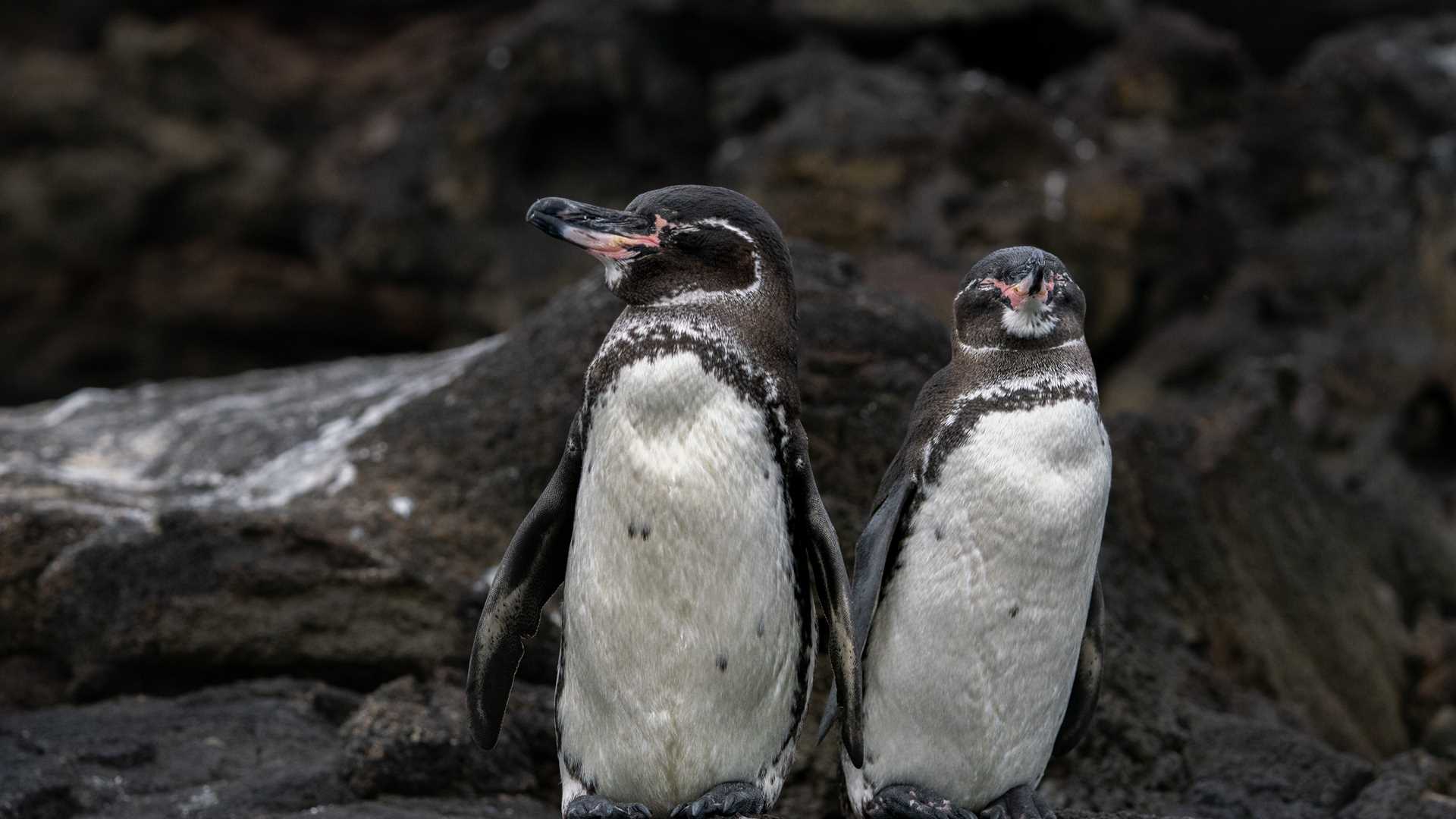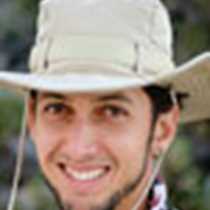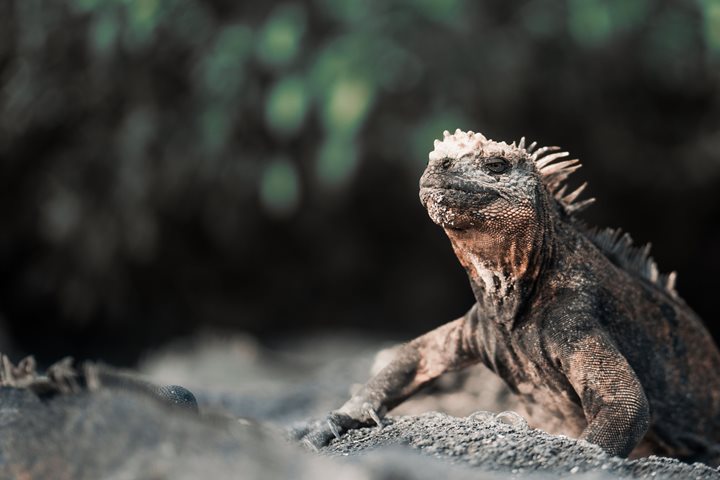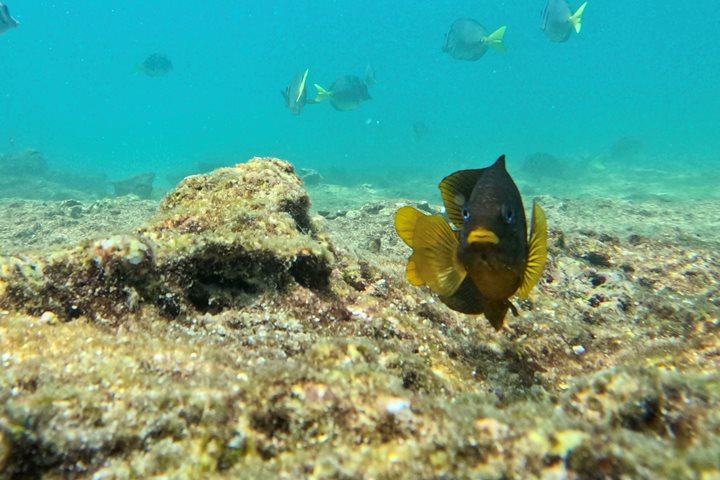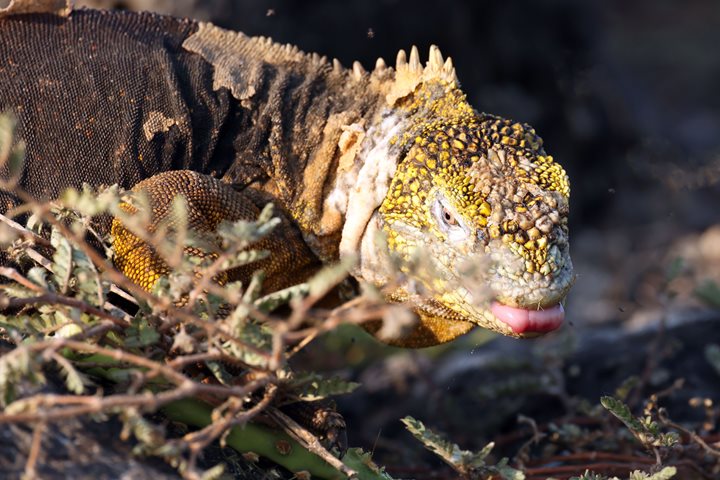This was our last full day, and we visited Fernandina, the youngest island of the archipelago. We hiked to young lava flows, where we found some of the most iconic species of the Galapagos. Penguins, cormorants, and marine iguanas established themselves in this harsh environment through natural selection.
This island is surrounded by unique marine conditions that allowed for the adaptation of marine iguanas, and we found them in the hundreds of thousands. The mating season has started, and we found several males fighting over territory in head-to-head combat. Not far away, a Galapagos hawk was flying and gliding over potential meals. This magnificent bird feeds mainly on the baby iguanas that hide in the cracks of the rocks.
A very special oceanic area on the western side of the archipelago has created the right conditions for the evolution of flightless cormorants. These beautiful animals have lost their ability to fly but have improved their diving skills. Turquoise eyes and strong feet add to the beauty of this bird.
In the afternoon, we explored the northern part of Isabella Island on Zodiacs. We enjoyed the amazing landscapes of the archipelago’s youngest volcanos. Along the shore, we continued to spot unique species only found in the Galapagos. Penguins, cormorants, iguanas, and sea lions covered the rocks.

